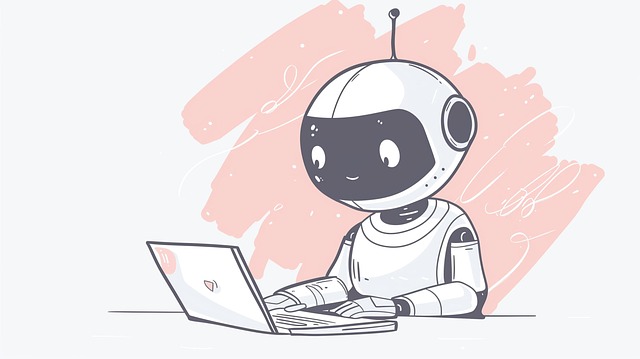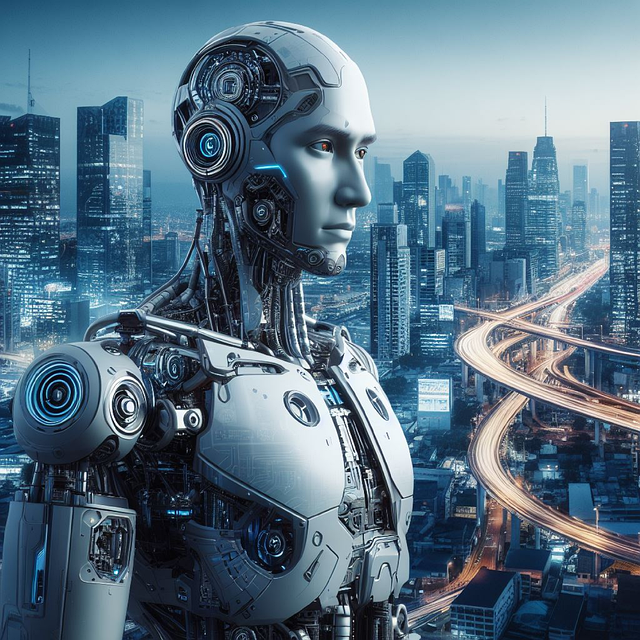AI chatbots, driven by NLP and ML, transform tech interactions with dynamic, context-aware conversations. Choosing the right tools, like Dialogflow, Watson Assistant, or Python libraries, is key based on chatbot purpose, skill set, and scalability. Training, testing, and iterative improvements ensure effectiveness. Implementation focuses on user experience, while post-deployment monitoring allows continuous refinement based on feedback and data.
Building an AI Chatbot has become a transformative process for businesses seeking to enhance customer engagement. This comprehensive guide explores the step-by-step creation of an efficient oChatbot. From understanding the fundamentals, including defining and differentiating chatbot capabilities, to choosing the right tools and techniques for design and development, we cover it all. Learn how to train, test, and implement your oChatbot effectively, ensuring a seamless user experience.
- Understanding AI Chatbot Fundamentals: Defining and Differentiating
- Designing and Developing Your oChatbot: Choosing the Right Tools and Techniques
- Training, Testing, and Implementing: Refining and Deploying Your AI Chatbot Effectively
Understanding AI Chatbot Fundamentals: Defining and Differentiating

AI chatbots have transformed the way we interact with technology, offering personalized and conversational experiences across various platforms. Understanding their fundamentals is crucial for anyone looking to build one. At its core, an AI chatbot is a software application designed to simulate human conversation through natural language processing (NLP) and machine learning (ML) technologies. These tools enable chatbots to interpret user inputs, generate appropriate responses, and learn from each interaction.
Defining an ochatbot involves distinguishing it from traditional rule-based systems. While rule-based bots follow pre-programmed scripts and specific commands, AI chatbots leverage advanced algorithms to understand context, recognize intent, and adapt their responses dynamically. This differentiation is what enables ochatbots to handle a broader range of user queries, learn from feedback, and continuously improve their performance over time.
Designing and Developing Your oChatbot: Choosing the Right Tools and Techniques

When designing and developing your oChatbot, selecting the appropriate tools and techniques is paramount to its success. The first step involves identifying the chatbot’s purpose and the platform it will operate on. Will it be a customer service representative for your website or a personal assistant on mobile devices? This determination guides your choice of development frameworks and programming languages. Popular options include Dialogflow, IBM Watson Assistant, Microsoft Bot Framework, and Python libraries like NLTK and TensorFlow.
Each tool offers unique features tailored to specific use cases, from natural language understanding to sentiment analysis and machine learning capabilities. For instance, Dialogflow excels in handling complex conversations thanks to its advanced intent recognition, while Python libraries provide more flexibility for custom algorithms and integrations. Considering your chatbot’s requirements, skill set, and scalability will ensure you pick the right tools to build an oChatbot that delivers on its promise.
Training, Testing, and Implementing: Refining and Deploying Your AI Chatbot Effectively

After developing your AI chatbot, it’s crucial to employ structured processes for training, testing, and implementing it to ensure its effectiveness. Training involves feeding vast amounts of relevant data—textual conversations, FAQs, or domain-specific knowledge—to teach the chatbot context and language patterns. Utilize diverse datasets to prevent bias and enhance performance across various user queries. Testing is paramount to identify and refine areas where the chatbot may falter. Conduct thorough dialogue flows, employing both automated tools and human evaluators, to assess accuracy, coherence, and contextual understanding. Iterate on the model based on test results to improve its capabilities.
Once refined, implementation involves seamlessly integrating your AI chatbot into desired platforms or interfaces—website chatbots, messaging apps, customer support systems, etc. Ensure a user-friendly experience, easy access, and clear communication about the chatbot’s capabilities and limitations. Continuously monitor performance post-deployment, gathering user feedback and analyzing interaction data to make informed adjustments, thereby refining your ochatbot over time and enhancing user satisfaction.
Building an effective AI chatbot involves understanding foundational concepts, selecting suitable tools, and rigorous training. By mastering these steps, you can create an engaging ochatbot that enhances user experiences, automates tasks, and drives business value. Remember, continuous testing and refinement are key to ensuring your chatbot delivers accurate, relevant, and valuable interactions.
